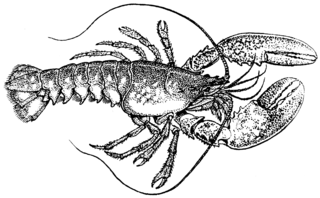Related Research Articles

Operation Enduring Freedom (OEF) was the official name used by the U.S. government for the Global War on Terrorism. On 7 October 2001, in response to the September 11 attacks, President George W. Bush announced that airstrikes targeting Al-Qaeda and the Taliban had begun in Afghanistan. Operation Enduring Freedom primarily refers to the War in Afghanistan, but it was also affiliated with counterterrorism operations in other countries, such as OEF-Philippines and OEF-Trans Sahara.
The United States Armed Forces are the military forces of the United States of America. The armed forces consists of six service branches: the Army, Marine Corps, Navy, Air Force, Space Force, and Coast Guard. The president of the United States is the commander-in-chief of the armed forces and forms military policy with the Department of Defense (DoD) and Department of Homeland Security (DHS), both federal executive departments, acting as the principal organs by which military policy is carried out. All six armed services are among the eight uniformed services of the United States.

Crayfish are freshwater crustaceans resembling small lobsters. In some locations, they are also known as crawfish, craydids, crawdaddies, crawdads, freshwater lobsters, mountain lobsters, rock lobsters, mudbugs, or yabbies. Taxonomically, they are members of the superfamilies Astacoidea and Parastacoidea. They breathe through feather-like gills. Some species are found in brooks and streams, where fresh water is running, while others thrive in swamps, ditches, and paddy fields. Most crayfish cannot tolerate polluted water, although some species, such as Procambarus clarkii, are hardier. Crayfish feed on animals and plants, either living or decomposing, and detritus.

The United States Army Special Forces, colloquially known as the "Green Berets" due to their distinctive service headgear, are a special operations force of the United States Army that are designed to deploy and execute nine doctrinal missions: unconventional warfare, foreign internal defense, direct action, counter-insurgency, special reconnaissance, counter-terrorism, information operations, counterproliferation of weapons of mass destruction, and security force assistance. The first two missions, unconventional warfare and foreign internal defenses, emphasize language, cultural, and training skills in working with foreign troops. Other Special Forces missions, known as secondary missions, include: combat search and rescue (CSAR), counter-narcotics, hostage rescue, humanitarian assistance, humanitarian demining, information operations, peacekeeping, and manhunts. Other components of the United States Special Operations Command (USSOCOM) or other U.S. government activities may also specialize in these secondary missions. The Special Forces conduct these missions via seven geographically focused groups. Many of their operational techniques are classified, but some nonfiction works and doctrinal manuals are available.

Cambarus is a large and diverse genus of crayfish from the United States and Canada. The adults range in size from about 5 centimeters (2 in) up to approximately 15 centimeters (6 in).

The signal crayfish is a North American species of crayfish. It was introduced to Europe in the 1960s to supplement the North European Astacus astacus fisheries, which were being damaged by crayfish plague, but the imports turned out to be a carrier of that disease. The signal crayfish is now considered an invasive species across Europe, Japan, and California ousting native species there.

The River Chess is a chalk stream that rises near Chesham in the Chiltern Hills, and flows for 11 miles (18 km) through Buckinghamshire and Hertfordshire to its confluence with the River Colne in Rickmansworth. The Chess, along with the Colne and Gade, gives rise to the name of the district of Three Rivers,.

Astacus astacus, the European crayfish, noble crayfish, or broad-fingered crayfish, is the most common species of crayfish in Europe, and a traditional food source. Like other true crayfish, A. astacus is restricted to fresh water, living only in unpolluted streams, rivers, and lakes. It is found from France throughout Central Europe, to the Balkan Peninsula, and north as far as parts of the British Isles, Scandinavia and Finland, and Eastern Europe. Males may grow up to 16 cm long, and females up to 12 cm.

The Parastacidae are the family of freshwater crayfish found in the Southern Hemisphere. The family is a classic Gondwana-distributed taxon, with extant members in South America, Madagascar, Australia, New Zealand, and New Guinea, and extinct taxa also in Antarctica.

Cherax, commonly known as yabby/yabbies in Australia, is the most widespread genus of fully aquatic crayfish in the Southern Hemisphere. Various species of cherax may be found in both still and flowing bodies of freshwater across most of Australia and New Guinea. Together with Euastacus, it is also the largest crayfish genus in the Southern Hemisphere.

The Tasmanian giant freshwater crayfish, also called Tasmanian giant freshwater lobster, is the largest freshwater invertebrate and the largest freshwater crayfish species in the world. The species is only found in the rivers below 400 metres (1,300 ft) above sea level in northern Tasmania, an island-state of Australia. It is listed as an endangered species on the IUCN Red List due to overfishing and habitat degradation, and it has been prohibited to catch the crayfish since 1998.

Procambarus clarkii, known variously as the red swamp crayfish, Louisiana crawfish or mudbug, is a species of cambarid crayfish native to freshwater bodies of northern Mexico, and southern and southeastern United States, but also introduced elsewhere, where it is often an invasive pest.

A crayfish party is a traditional summertime eating and drinking celebration in the Nordic countries. The tradition originated in Sweden, where a crayfish party is called a kräftskiva. The tradition has also spread to Finland via its Swedish-speaking population, and Norway. A similar tradition exists in the Baltic countries in particular in Lithuania and Latvia.

Austropotamobius pallipes is an endangered European freshwater crayfish, and the only crayfish native to the British Isles. Its common names include white-clawed crayfish and Atlantic stream crayfish.

Cambarus cryptodytes, the Dougherty Plain cave crayfish or Apalachicola cave crayfish, is a small, freshwater crayfish endemic to Florida and Georgia in the United States. It is an underground species known only from waters associated with the Floridan aquifer.

Faxonius virilis is a species of crayfish known as the virile crayfish, northern crayfish,eastern crayfish, and lesser known as the lake crayfish or common crawfish. Faxonius virilis was reclassified in August 2017, and the genus was changed from Orconectes to Faxonius. It is native to eastern United States and southeast Canada.

Sagmariasus verreauxi is a species of spiny lobster that lives around northern New Zealand, the Kermadec Islands the Chatham Islands and Australia from Queensland to Tasmania. It is probably the longest decapod crustacean in the world, alongside the American lobster Homarus americanus, growing to lengths of up to 60 centimetres (24 in).

Crayfish are eaten all over the world. Like other edible crustaceans, only a small portion of the body of a crayfish is edible. In most prepared dishes, such as soups, bisques and étouffées, only the tail portion is served. At crawfish boils or other meals where the entire body of the crayfish is presented, other portions, such as the claw meat, may be eaten.

"The Crabfish" is a ribald humorous folk song of the English oral tradition. It dates back to the seventeenth century, appearing in Bishop Percy's Folio Manuscript as a song named "The Sea Crabb" based on an earlier tale. The moral of the story is that one should look in the chamber pot before using it.